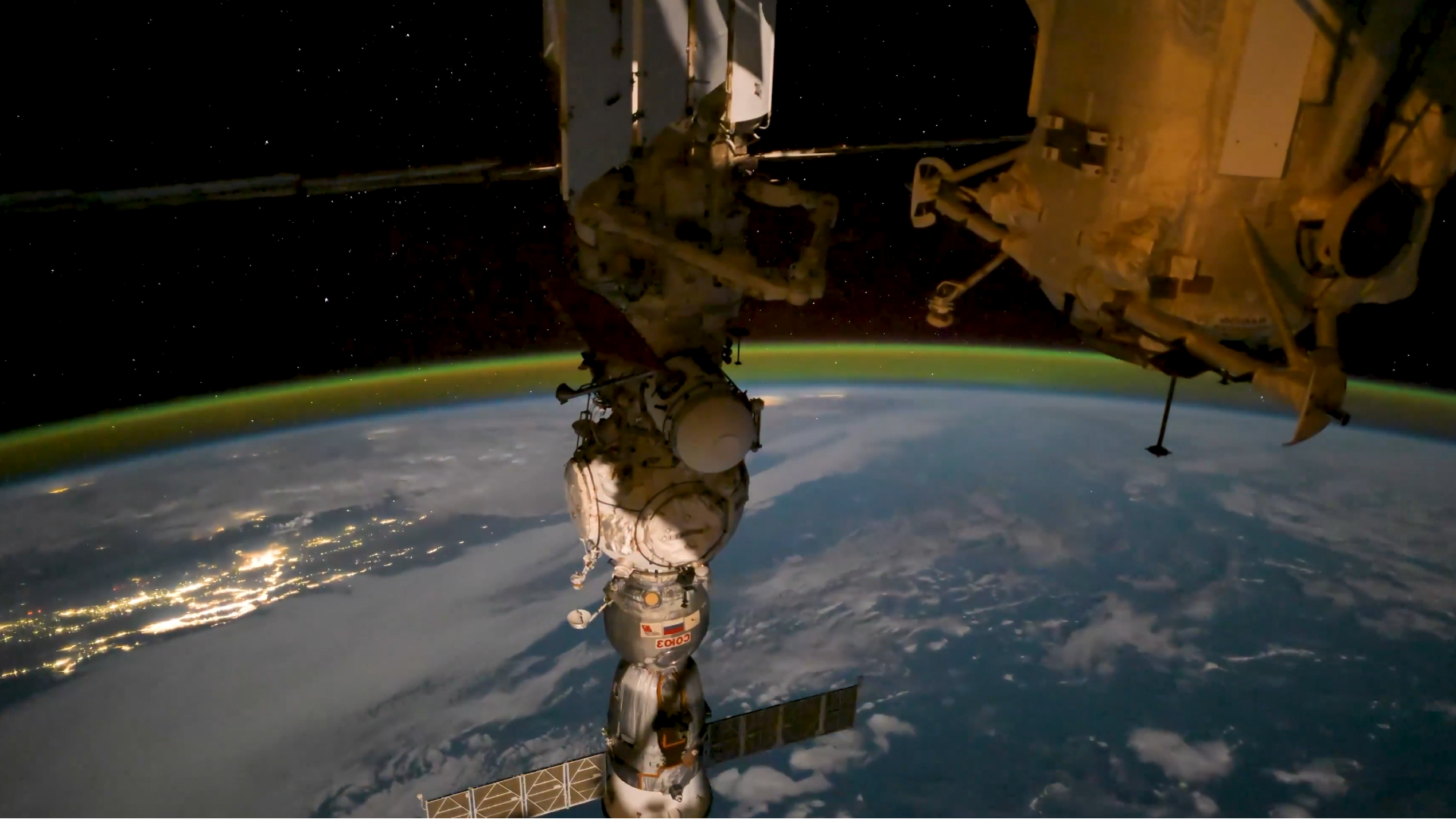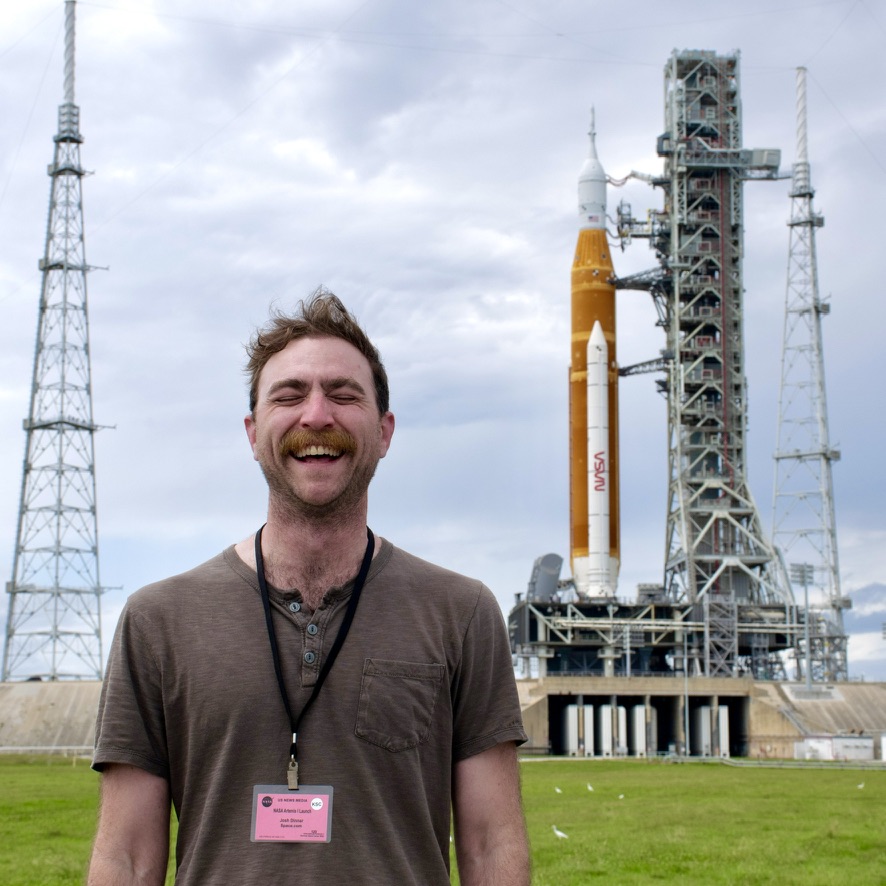ISS astronauts take cover from radiation as solar storms spark auroras across the planet
Out of an "abundance of caution," the station's three Russian cosmonauts were instructed to spend a night in the ISS laboratory module.

It's not all about pretty auroras when the sun shoots some ejecta our way. As people across the Earth gazed at the sky the past few nights, staring up at the brilliant auroras brought on by recent intense solar storms, Earthlings in orbit had to take some precautions.
Astronauts aboard the International Space Station (ISS) were forced to rearrange some of their sleeping arrangements due to the potential threat posed by recent solar storms, a recent communications exchange between ISS mission control and crew members aboard the space station shows.
"We entered into an energetic solar particle event this morning, and we're going to go in and out of holes of higher than the baseline [radiation] risk," one operator told NASA astronaut Mike Fincke over the comms channel. Out of an "abundance of caution," the station's three Russian cosmonauts were instructed to spend a night in the ISS laboratory module
On the nights of Nov. 11 and 12, coronal mass ejections from one of the most energetic sunspot groups of the current solar cycle, AR4274, caused widespread auroras across the Northern Hemisphere. The same energized particles that interact with Earth's magnetosphere to create auroras also arrive carrying heavy, radioactive ions, which can be harmful to astronauts in orbit not shielded by the planet's natural defenses.
The ISS does have some defenses of its own, though. Only Russian crew members Oleg Platonov, Sergey Ryzhikov and Alexey Zubritsky were asked to bunk elsewhere for the night. "The USOS crew slept in their crew quarters and the Roscosmos cosmonauts camped out in the lab as a preventative measure due to the solar storm," Sandra Jones, a NASA public affairs official, told Space.com in an email. The ISS crew was also given a list of other places aboard the ISS to avoid during the solar storm event.
In addition to cosmonauts Platonov, Ryzhikov and Zubritsky, ISS Expedition 73 consists of NASA astronauts Mike Fincke, Jonny Kim and Zena Cardman, as well as JAXA astronaut Kimiya Yui. The latter four launched to the ISS Aug. 1 aboard a SpaceX Dragon spacecraft, and are scheduled to remain aboard the station for another three months.
With the U.S. government shutdown over, American astronauts both on Earth and in space are able to resume their online presences. Just in time, Kim took to social media to share a video of aurora from space taken on Sept. 3 as his first post since the shutdown ended.
Breaking space news, the latest updates on rocket launches, skywatching events and more!

Josh Dinner is the Staff Writer for Spaceflight at Space.com. He is a writer and photographer with a passion for science and space exploration, and has been working the space beat since 2016. Josh has covered the evolution of NASA's commercial spaceflight partnerships and crewed missions from the Space Coast, as well as NASA science missions and more. He also enjoys building 1:144-scale model rockets and human-flown spacecraft. Find some of Josh's launch photography on Instagram and his website, and follow him on X, where he mostly posts in haiku.
You must confirm your public display name before commenting
Please logout and then login again, you will then be prompted to enter your display name.
